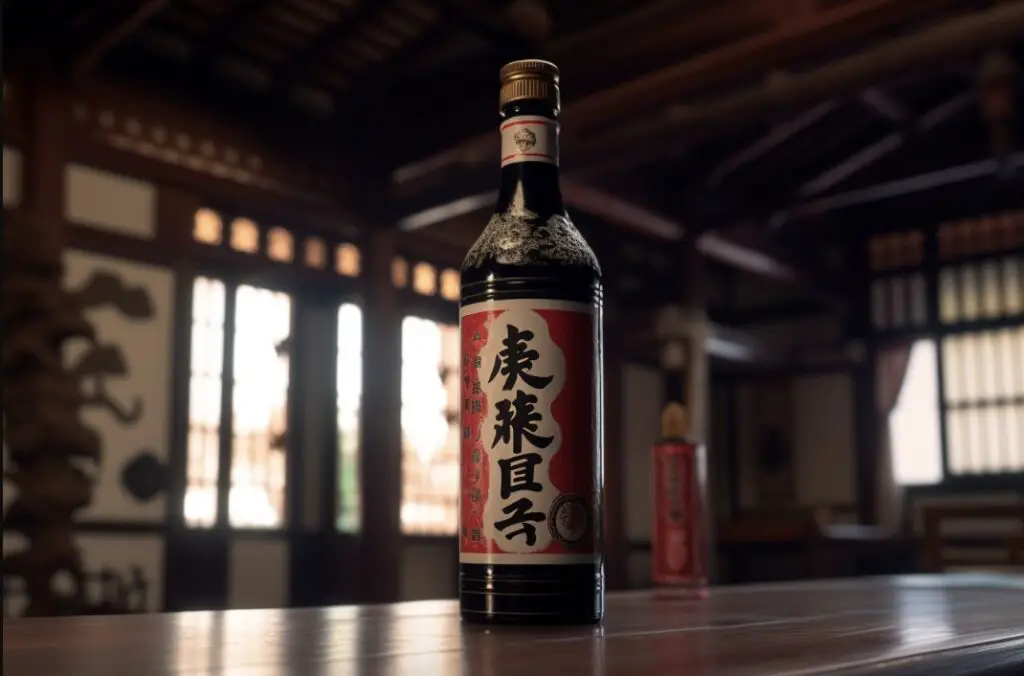As a wine enthusiast and taster, I have had the pleasure of experiencing a myriad of delightful flavors, aromas, and unique characteristics of wines from all over the world.
One such wine that has piqued my interest is Shaoxing wine, a traditional Chinese rice wine originating from Shaoxing, a city located in Zhejiang Province in eastern China.
Shaoxing wine is a crucial ingredient in Chinese cuisine, known for its distinct aroma and ability to enhance the flavors of various dishes.
However, not everyone has access to Shaoxing wine, or perhaps some may not enjoy its flavor profile.
Fear not, for there are alternatives that can still bring a similar depth of flavor to your dishes. In this blog post, I will be sharing five alternatives to Shaoxing wine:
1. Dry sherry
2. Sake
3. Mirin
4. Rice vinegar and sugar
5. White wine
1. Dry Sherry
The Flavor Profile of Dry Sherry
Dry sherry, originating from the Jerez region in Spain, is a fortified wine made from white grapes. It has a similar flavor profile to Shaoxing wine, with its nutty and slightly sweet taste. The nuttiness of dry sherry comes from the aging process, where it is exposed to air and develops a film of yeast called “flor,” which imparts unique flavors onto the wine.

How to Use Dry Sherry as an Alternative
Dry sherry can easily replace Shaoxing wine in recipes, especially in Chinese dishes that call for it. Simply substitute it at a 1:1 ratio, and you will still achieve a depth of flavor in your dishes. Keep in mind that sherry is slightly sweeter than Shaoxing wine, so you may need to adjust the other ingredients in your dish accordingly.
2. Sake
The Flavor Profile of Sake
Sake, also known as Japanese rice wine, is another suitable alternative to Shaoxing wine. While it may not have the same depth of flavor as Shaoxing wine, sake can still add a subtle, savory essence to your dishes. Sake is made from fermented rice and has a relatively mild taste, with a hint of sweetness and a smooth finish.

How to Use Sake as an Alternative
You can substitute sake for Shaoxing wine at a 1:1 ratio in your recipes. Keep in mind that sake is milder in flavor compared to Shaoxing wine, so you might want to add a bit more to your dish for a stronger taste if desired.
3. Mirin
The Flavor Profile of Mirin
Mirin is a sweet Japanese cooking wine made from fermented rice, similar to sake but with a lower alcohol content and higher sugar content. It has a sweet, syrupy taste and is often used in Japanese cuisine to add sweetness and depth to dishes.
How to Use Mirin as an Alternative
While mirin is sweeter than Shaoxing wine, it can still be used as a substitute in recipes that call for the latter. Use a 1:1 ratio when substituting mirin for Shaoxing wine; however, be sure to adjust the other ingredients in your dish to balance out the added sweetness.
4. Rice Vinegar and Sugar
The Flavor Profile of Rice Vinegar and Sugar
Rice vinegar, made from fermented rice, has a milder and sweeter taste compared to other types of vinegar. When combined with sugar, it can mimic the sweet and tangy flavor profile of Shaoxing wine.
How to Use Rice Vinegar and Sugar as an Alternative
To use rice vinegar and sugar as a substitute for Shaoxing wine, mix three parts rice vinegar with one part sugar. This mixture can then be substituted at a 1:1 ratio for Shaoxing wine in your recipes.
5. White Wine
The Flavor Profile of White Wine
White wine, such as Sauvignon Blanc or Chardonnay, can be another alternative to Shaoxing wine. While the flavor profile may not be as similar as the other alternatives mentioned above, white wine can still bring a fruity and acidic element to your dishes.

How to Use White Wine as an Alternative
When substituting white wine for Shaoxing wine, use a 1:1 ratio. Keep in mind that the flavor may be slightly different from what Shaoxing wine would bring to the dish, but it will still provide a pleasant taste and depth of flavor.
# Conclusion
In conclusion, there are several alternatives to Shaoxing wine that can still bring a unique and delightful taste to your dishes. While each alternative has its own distinct flavor profile, they can all be used to substitute Shaoxing wine in your recipes. My personal recommendation would be to try dry sherry as it has the most similar flavor profile to Shaoxing wine and can easily replace it in your dishes with minimal adjustments to the other ingredients. Happy cooking, and may your culinary adventures be full of flavor and excitement!
FAQs
What is the difference between Chinese cooking wine and rice wine vinegar?
Chinese cooking wine, also known as Shaoxing wine, is a fermented rice wine commonly used in Chinese cuisine for marinating, stir-frying, and braising. It has a rich, aromatic flavor and is often used to enhance the taste of dishes.
On the other hand, rice wine vinegar is made from fermented rice wine that has been further fermented to produce vinegar. It has a tangy, slightly acidic taste and is primarily used as a vinegar for dressings, marinades, and sauces in various cuisines, including Chinese.
In summary, the main difference lies in their flavor profiles and culinary uses. Chinese cooking wine adds depth and complexity to dishes, while rice wine vinegar provides tanginess and acidity to enhance flavors.
Can I use apple cider vinegar instead of cooking wine?
Yes, you can use apple cider vinegar as a substitute for cooking wine in certain recipes. Apple cider vinegar has a tangy and slightly fruity flavor that can add a similar acidic element to dishes. However, keep in mind that apple cider vinegar has a distinct taste, so it may alter the overall flavor of your dish. It is best suited for recipes where the vinegar flavor complements the other ingredients.
Is apple cider vinegar a good substitute for Shaoxing wine?
Apple cider vinegar can be used as a substitute for Shaoxing wine in certain recipes, but it will impart a different flavor profile. Shaoxing wine has a unique taste that adds depth and complexity to dishes, particularly in Chinese cuisine. While apple cider vinegar can provide acidity, it may not replicate the exact flavor of Shaoxing wine. It’s best to consider the specific recipe and the desired outcome before deciding to use apple cider vinegar as a substitute.
Can I use cider vinegar instead of Chinese rice wine?
Yes, you can use cider vinegar as a substitute for Chinese rice wine in certain recipes. However, it’s important to note that cider vinegar has a distinct flavor that may alter the taste of the dish. Chinese rice wine has a milder and sweeter taste, so the substitution may not provide the exact same flavor profile.
Is Shaoxing rice wine the same as vinegar?
No, Shaoxing rice wine is not the same as vinegar. Shaoxing rice wine is a traditional Chinese alcoholic beverage made from fermented rice, while vinegar is a sour liquid made from the fermentation of ethanol by acetic acid bacteria. They have distinct flavors, uses, and compositions.
Can I use apple cider vinegar instead of Shaoxing wine?
Yes, you can use apple cider vinegar as a substitute for Shaoxing wine in certain recipes. However, it’s important to note that the flavors will be different. Shaoxing wine has a unique taste and aroma that contributes to the authenticity of Chinese cuisine. Apple cider vinegar can provide a similar tanginess, but it may also add a slightly fruity note. Adjust the quantity according to your taste and the specific dish you’re preparing.




